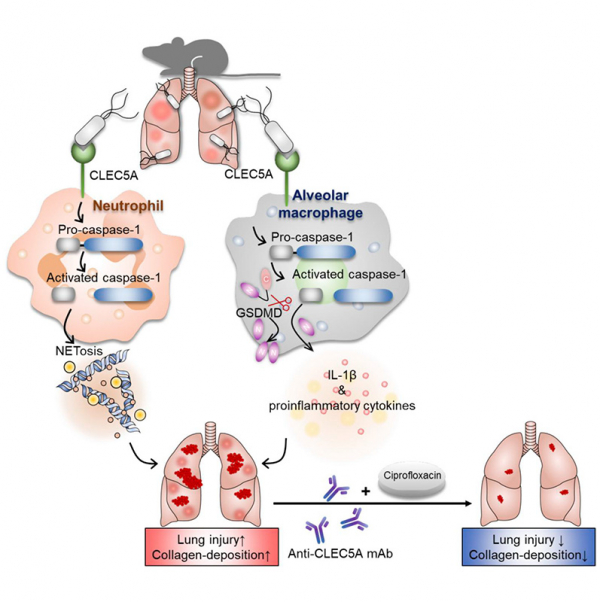Pseudomonas aeruginosa is one of the most common nosocomial infections worldwide, and it frequently causes ventilator-associated acute pneumonia in immunocompromised patients. Abundant neutrophil extracellular traps (NETs) contribute to acute lung injury, thereby aggravating ventilator-induced lung damage. While pattern recognition receptors (PRRs) TLR4 and TLR5 are required for host defense against P. aeruginosa invasion, the PRR responsible for P. aeruginosa–induced NET formation, proinflammatory cytokine release, and acute lung injury remains unclear. We found that myeloid C-type lectin domain family 5 member A (CLEC5A) interacts with LPS of P. aeruginosa and is responsible for P. aeruginosa–induced NET formation and lung inflammation. P. aeruginosa activates CLEC5A to induce caspase-1–dependent NET formation, but it neither causes gasdermin D (GSDMD) cleavage nor contributes to P. aeruginosa–induced neutrophil death. Blockade of CLEC5A attenuates P. aeruginosa–induced NETosis and lung injury, and simultaneous administration of anti-CLEC5A mAb with ciprofloxacin increases survival rate and decreases collagen deposition in the lungs of mice challenged with a lethal dose of P. aeruginosa. Thus, CLEC5A is a promising therapeutic target to reduce ventilator-associated lung injury and fibrosis in P. aeruginosa–induced pneumonia.
Language
週四, 01 九月 2022 09:24
